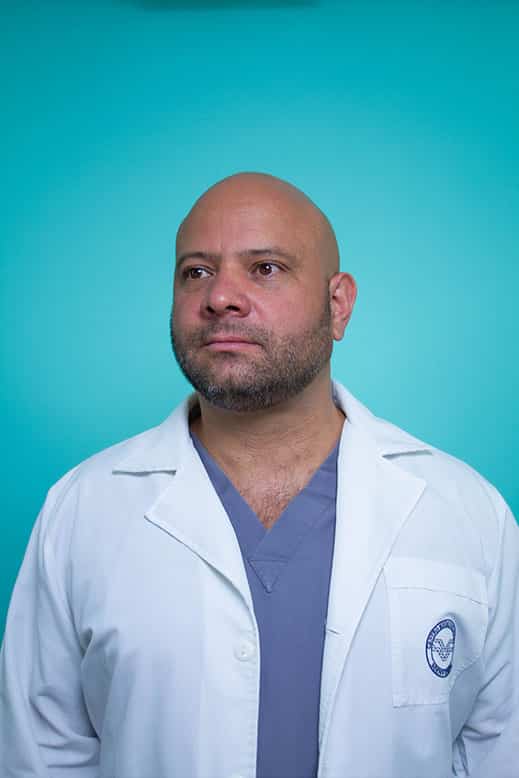The placement of dental implants is one of the most common interventions in dentistry.
But before carrying out this surgery, it is necessary that the dentist specialized in Implantology makes a series of checks.
If the patient has postponed the placement of implants for a long time, it is possible that dental bone resorption has occurred.
This is only one of the consequences of missing teeth.
If bone mass has been lost, a sinus lift may be indicated, the steps and benefits of which we will explain in this article.
The paranasal sinuses
Before explaining the purpose of a sinus lift, it is essential to know what this part of our anatomy is.
The paranasal sinuses are a set of cavities that communicate with the nasal cavities and influence daily activities such as breathing or phonation.
They are located in the bones of the face and skull and each person has 8 sinuses, distributed in 4 groups on each side of the face:
Frontal
Ethmoidal
Maxillary
Sphenoidal
Maxillary sinus
Enlarge image
PARANASAL SINUSES
Characteristics of the maxillary sinus
Also called “Highmore’s antrum”, the maxillary sinus is the largest cavity of the entire set of paranasal sinuses, having a size similar to that of a ping pong ball.
It has a characteristic irregular pyramidal shape and is located in the upper maxillary bone, one on each side of the face.
This cavity is lined with mucosa and, if infected, causes maxillary sinusitis.
In early childhood, the maxillary sinus is located in the upper part of the face.
However, as we grow older, it gradually descends.
It usually reaches its proper level by the age of eight.
When is a sinus lift necessary?
Either for lack of desire or for fear of undergoing a surgical operation, such as the placement of dental implants, sometimes we postpone dental treatments.
Although the placement of implants is a very frequent oral surgery, people who are going to undergo it express a series of concerns.
For example, patients often have many doubts about the risks or complications that such a procedure may entail.
In addition, when we have lost a tooth, it may take us a long time to notice the problems associated with this loss.
Apart from the problems related to occlusion, the fact that we do not have one or more teeth goes hand in hand with the loss of maxillary bone mass.
This is due to the fact that the alveolar bone ceases to receive the stimulus from the tooth itself, so it begins to lose its height and thickness.
If this is the case, when the time comes to place the implant, we find that it is not possible to ensure its adequate fixation because there is not enough bone.
For this reason, dentists recommend not to postpone dental treatment when it is necessary.
The sooner the problem is remedied, the simpler, faster and cheaper it will be to solve it.
Fortunately, there are techniques that achieve dental bone regeneration to make implant insertion possible.
However, if the area where the bone surface is missing corresponds to the location of the sinus, it is necessary to perform a sinus lift.
Maxillary sinus lift allows the placement of dental implants even if the patient does not have enough bone surface.
What is a sinus lift?
Maxillary sinus elevation is a surgical technique performed in dental implantology in patients who do not have enough bone.
Thus, it allows the placement of implants in people who do not have sufficient bone volume and height in the posterior area of the upper jaw.
This procedure allows, therefore, to vertically increase the amount of bone available.
It is a very effective treatment when the patient, for whatever reason, has experienced a drastic bone loss that prevents the correct fastening of the implants.
In this way, the technique makes it possible to replace teeth in people who would otherwise not be able to undergo implant surgery.
It also reinforces the effectiveness of titanium screws in the posterior area of the upper jaw, which is the area where most failures are concentrated.
This is due to the fact that this area is particularly affected by premature tooth loss or periodontal disease, among other problems.
Placement of an implant
Enlarge image
DENTAL IMPLANTS
The treatment, step by step
Sinus lift is a safe, predictable and effective technique.
However, before planning oral surgery, the specialist must determine if it is appropriate for the patient to undergo it.
To do this, we assess the patient’s clinical history and perform both an intraoral examination and the appropriate radiographic tests to obtain a complete study.
Once we have determined that the person is suitable, the intervention will consist of performing a dental bone graft in the most posterior area of the upper jaw.
That is, in the area where the molars and premolars are located.
Replace the missing teeth
The less time that passes between the loss of your tooth and the placement of the implant, the less likely the bone will be resorbed.
Open sinus lift
Most of the time, the protocol we perform in our dental clinic to perform this operation is the open sinus lift.
It is based on the Cadwell-Luc technique, which originally comes from the medical specialty of Otorhinolaryngology.
In its beginnings it was used to clean the maxillary sinus when sinusitis was present.
However, the procedure has been adapted to the field of dental implantology and consists of the following steps:
Local anesthesia
First of all, it is necessary to numb the area to be operated on with anesthesia so that the sinus lift does not cause pain or discomfort to the patient.
If the person feels a certain level of stress or anxiety before the intervention, he/she can request the conscious sedation technique.
Gum incision and access window
Next, the dentist makes a lateral incision that extends to create an access window to the interior of the maxillary sinus.
In this way, the specialist obtains a wide view of the area to be worked on.
Elevation of the sinus membrane
On the floor of the sinus there is Schneider’s membrane, which must be lifted so that it is possible to add the substance that replaces the missing bone.
This step must be performed particularly carefully so as not to damage or tear the Schneider’s membrane.
It is therefore essential that we place ourselves in the hands of an experienced and trustworthy implantologist.
Filling of the cavity with artificial bone
To fill the floor of the sinus cavity we use an artificial bone composed mainly of calcium hydroxyapatite.
This substance is completely biocompatible and biodegradable, so it does not generate problems of incompatibility with the organism.
The material is grafted into the space resulting from the lifting of the maxillary sinus membrane and mixed with the patient’s real bone.
Bone regeneration
Enlarge image
MAXILLARY SINUS ELEVATION
Gum closure
Once the oral surgery is completed, the implantologist closes the wound produced during the intervention to allow it to heal.
Implant placement
As a general rule, it is necessary for the patient to wait about 7 months for the hydroxyapatite to fully integrate with the natural bone.
Once this union has effectively taken place, the implants can be placed.
However, it is sometimes possible to insert the implant screw immediately after the sinus lift is performed.
For this, it is essential that the patient has at least 4 millimeters of actual bone height.
Since an implant requires 10 millimeters of height to be properly fixed, it would only be necessary to expand the floor of the maxillary sinus by 6 millimeters.
The main advantage of performing the elevation and implant placement in the same office is that the patient only undergoes one surgery.
In addition, the process of osseointegration of the implant and the union of the artificial bone occurs simultaneously.
Depending on the patient’s initial bone base, the implant can be placed immediately or 7 months after the sinus lift.
Therefore, the surgeon who performs the procedure will determine, depending on the bone height, when the implants can be placed.
If you want to see graphically all the phases we have explained, Dr. Alberto Wintergerst explains the step by step of sinus lift surgery in the following video:
Maxillary sinus lift
Another technique: closed sinus lift
In addition to the protocol based on the Cadwell-Luc technique, there is another treatment called closed or atraumatic sinus lift.
Although less frequent than the one described above, we also perform this procedure in our practice.
The reason why it is not commonly performed is that at least 5 millimeters of natural bone are needed.
In contrast, the Cadwell-Luc technique does not require a minimum bone height.
To perform the closed or atraumatic sinus lift, the same opening where the implants are placed is used.
In this way, the dentist uses a surgical instrument called an osteotome to elevate the Schneider’s membrane and the opening is filled with artificial bone.
In almost all cases of closed sinus lift it is possible to place the implant immediately after bone grafting.
MAKE AN APPOINTMENT WITH IMPLANTOLOGY
Recovery time and postoperative period
As with implant surgery, sinus lifts offer very positive results and have a high success rate.
The normal postoperative period for a sinus lift is not necessarily painful, and there is no noticeable swelling or bruising at the site of surgery.
The maximum peak of swelling occurs at 48 hours and usually all symptoms have completely disappeared 7 to 10 days after surgery.
However, the appearance of maxillary sinusitis can be more problematic, although it is a rare problem.
To mitigate the possible discomfort, it is necessary to follow the care that the surgeon who has performed the intervention.
Some of these recommendations are the following:
Do not rinse your mouth until the day after surgery.
During the first 24 hours after the sinus lift, do not brush your teeth. Once you begin to do so, avoid the surgical area.
Wait until at least two hours have passed before eating or drinking.
Follow a bland, cold diet for the rest of the day and avoid alcohol.
Take the medication prescribed by the dentist.
Apply ice to the operated area for two hours after the operation.
Reduce smoking as much as possible: smoking not only worsens the postoperative period, but also compromises the success of the implants.
Remember that everything we explain here are general guidelines and that the most appropriate recommendations for your recovery will be determined by your surgeon.
Don’t know if you need a sinus lift?
If you are missing a tooth, remember that the sooner you replace it, the easier the treatment will be.
If not too much time elapses between the time the tooth falls out and the time we place a dental implant, it is possible that the bone has not been resorbed.
Therefore, going to a trusted dental clinic promptly can make the surgery to place an implant cheaper and faster.
Remember that sinus lift can only be performed in the upper posterior area.
Therefore, if you are missing a tooth in the lower arch, for example, you will have to resort to other bone regeneration techniques.



